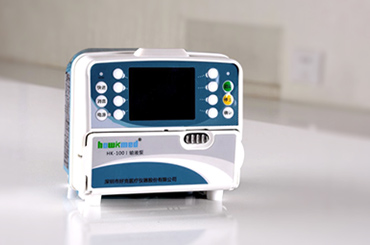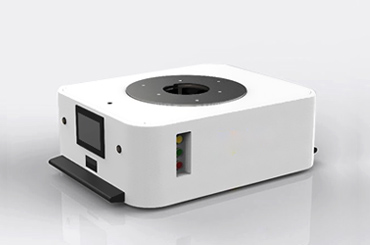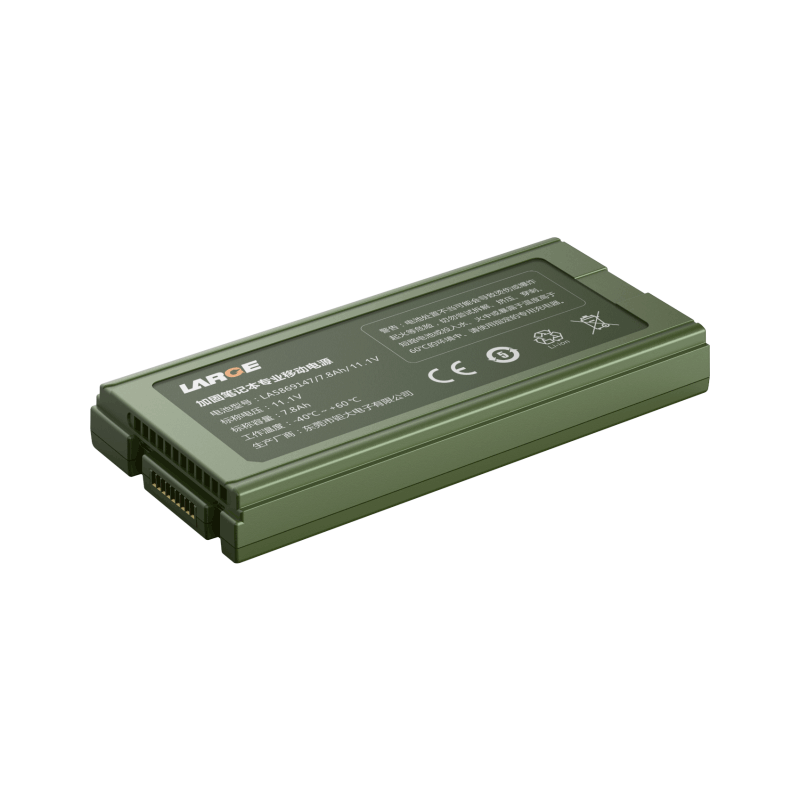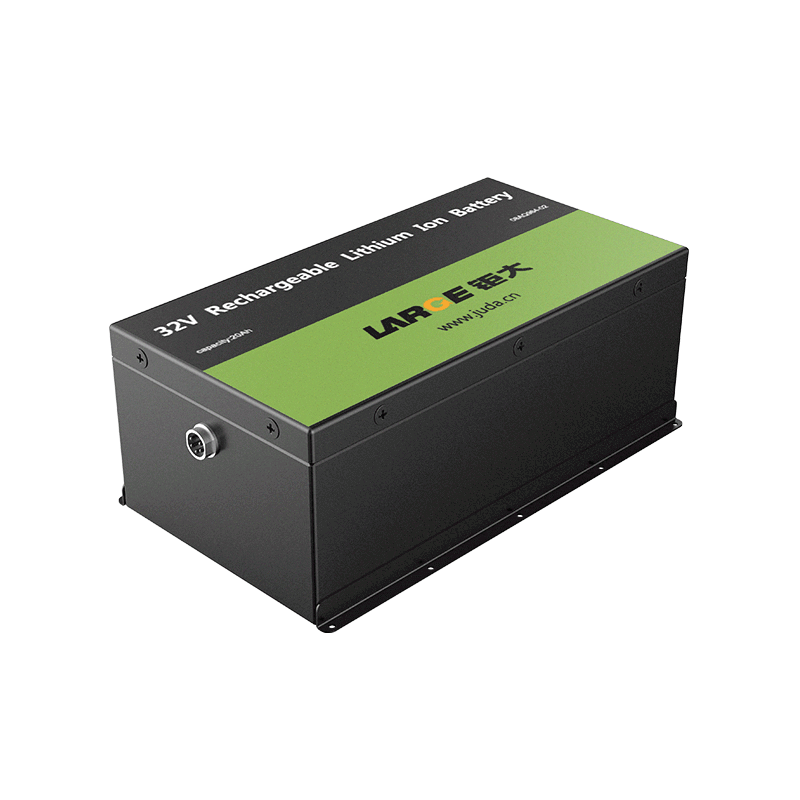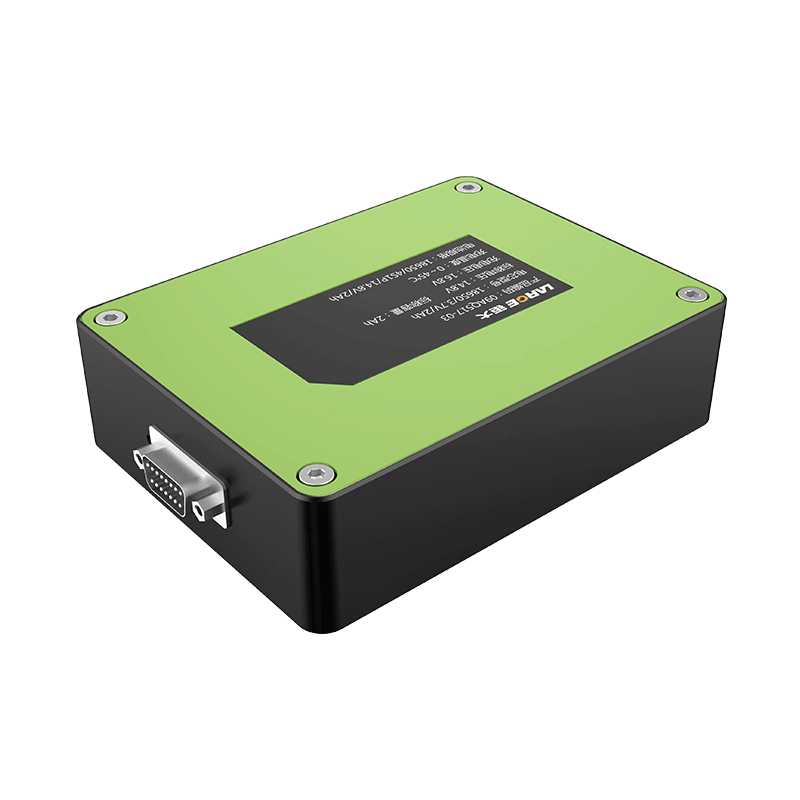-
Key Takeaways
-
Part 1: Types of Golf Cart Batteries+
- 1.1 Lead-Acid Batteries: Pros, Cons, and Best Use Cases
- 1.2 Lithium-Ion Batteries: Pros, Cons, and Best Use Cases
-
Part 2: Assessing Your Needs for the Right Battery+
- 2.1 Frequency of Use: Occasional vs. Regular
- 2.2 Terrain and Driving Conditions: Flat vs. Hilly Areas
- 2.3 Budget Considerations: Balancing Cost and Performance
-
Part 3: Key Factors to Consider When Choosing the Right Battery+
- 3.1 Voltage and Capacity: Matching Your Golf Cart’s Requirements
- 3.2 Battery Lifespan and Warranty: Ensuring Long-Term Value
-
Part 4: Tips for Maintaining Your Golf Cart Battery+
- 4.1 Proper Charging Practices: Extending Battery Life
- 4.2 Cleaning and Storage Tips: Keeping Your Battery in Top Shape
- 4.3 Monitoring Battery Health: Identifying Issues Early
-
FAQ+
- What is the difference between gas and electric golf carts in terms of battery needs?
- How often should you replace a golf cart battery?
- Can you upgrade your golf cart to use a lithium-ion battery?
How to Pick the Perfect Golf Cart Battery for Your Needs
APR 11, 2025 Pageview:34
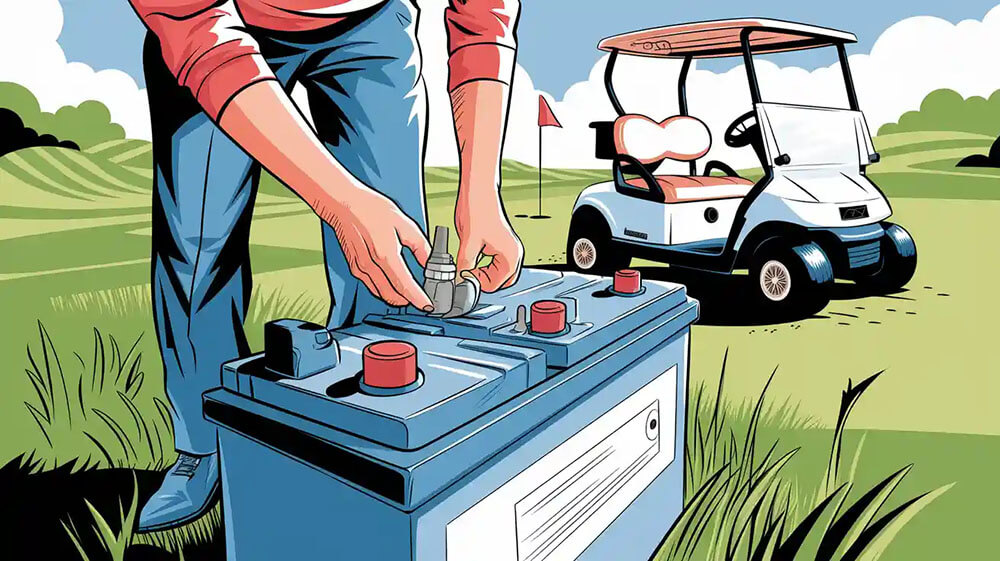
Selecting the right battery system for your golf cart impacts its performance and lifespan. You need a golf cart battery that matches your cart’s battery specifications and usage patterns. Choosing the right battery ensures compatibility and reduces maintenance hassles. Evaluate factors like voltage, capacity, and durability to make an informed decision.
Key Takeaways
Pick the types of batteries for how you use your cart. Lithium-ion batteries work well for daily use and hills. Lead-acid batteries are better for flat areas and rare use.
Make sure the battery's voltage and size fit your cart. This helps it work well and last longer without damage.
Choose batteries that last long and need little care. A good battery system saves money and makes using your cart better.
Part 1: Types of Golf Cart Batteries
1.1 Lead-Acid Batteries: Pros, Cons, and Best Use Cases
Lead-acid batteries are a traditional choice for golf carts. They are widely available and cost-effective, making them a popular option for budget-conscious buyers. They come in two subtypes: flooded (wet cell) and AGM (Absorbed Glass Mat). Both are deep-cycle batteries designed for repeated discharge and recharge.
Pros of Lead-Acid Batteries
Cost-Effective:
Flooded: Cheapest upfront cost.
AGM: Moderately priced (~20–30% more than flooded).
Wide Availability:
Easy to replace or find compatible models from local suppliers.
Proven Technology:
Decades of reliable use in golf carts and other vehicles.
AGM-Specific Benefits:
Maintenance-free, spill-proof, and vibration-resistant.
Cons of Lead-Acid Batteries
High Maintenance (Flooded Only):
Require monthly distilled water refills to keep electrolyte levels topped up.
Weight and Bulk:
Heavy (60–70 lbs per battery), affecting cart efficiency.
Charging Limitations:
Slow charging (8–10 hours for full charge).
Risk of sulfation if left discharged for long periods.
These batteries are best suited for flat terrains and occasional use, where their limitations in efficiency and lifespan are less impactful.
1.2 Lithium-Ion Batteries: Pros, Cons, and Best Use Cases
Lithium-ion batteries are a modern solution for golf carts, offering superior performance and longevity. They are lightweight, eco-friendly, and require no maintenance. According to the U.S. Department of Energy (DOE), lithium-ion batteries have 3-4 times higher energy density than traditional lead-acid batteries, making them ideal for high-frequency usage scenarios.Their high efficiency and extended lifespan make them ideal for regular use and challenging terrains.
Key Benefits:
Eco-friendly properties
Higher efficiency
Longer lifespan
Less environmental harm
Pros of Lithium-Ion Batteries
Long Lifespan:
Handle 2,000–5,000 charge cycles vs. 500–1,000 for lead-acid.
A golf course manager reported: ‘Switching to lithium-ion batteries reduced charging time by 40% and significantly lowered maintenance costs.‘
Lightweight:
50–70% lighter than lead-acid (e.g., 30–50 lbs vs. 60–70 lbs per battery).
Fast Charging:
Charge fully in 4–6 hours (vs. 8–10 hours for lead-acid).
Temperature Resilience:
Operate efficiently in extreme heat or cold (-4°F to 140°F).
Per Consumer Reports’ 2023 analysis, lithium-ion batteries outperform lead-acid in cycle life and stability under extreme temperatures.
Cons of Lithium-Ion Batteries
Compatibility Challenges:
Older carts may require wiring/charger upgrades for lithium compatibility.
Recycling Complexity:
Recycling infrastructure is less established than for lead-acid.
Lithium-ion batteries are perfect for users seeking long-term value and minimal upkeep. Their ability to deliver consistent power makes them a top choice for demanding applications.
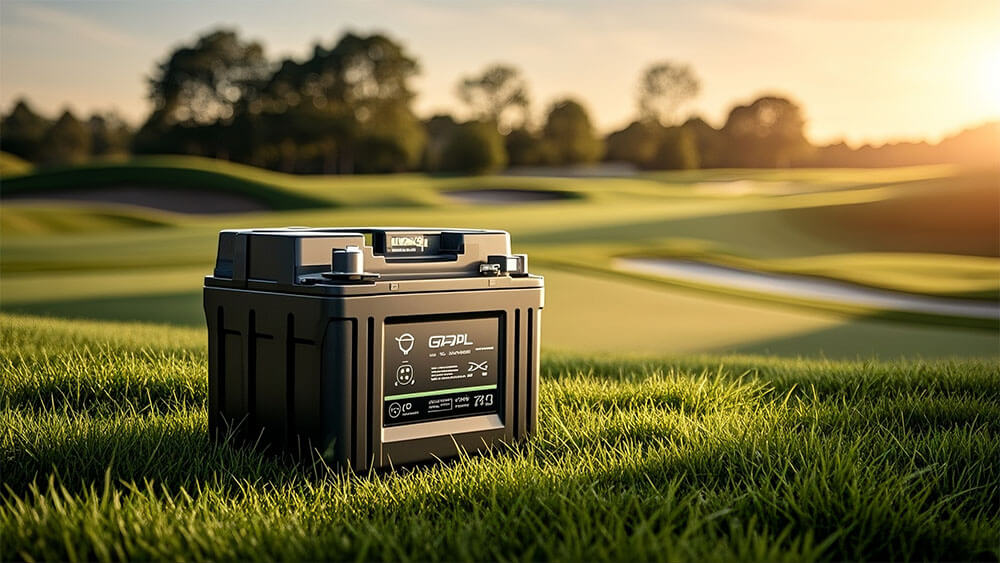
Part 2: Assessing Your Needs for the Right Battery
2.1 Frequency of Use: Occasional vs. Regular
Your golf cart's usage frequency plays a significant role in determining the ideal battery. Batteries in electric golf carts used regularly experience more wear and tear due to constant demand. Heavy usage consumes charge cycles faster, leading to a shorter lifespan. On the other hand, occasional use places less strain on the battery, allowing it to retain capacity for a longer period.
Key Considerations:
Occasional Users:
AGM (low maintenance) or lithium-ion (best for infrequent use).
Avoid flooded lead-acid unless you commit to maintenance.
Regular Users:
Lithium-ion (optimal for heavy cycling) or AGM (mid-range budget).
Flooded lead-acid only if cost-driven and maintenance is feasible.
Final Tip: Match your battery to your usage pattern. Lithium-ion offers versatility for both scenarios but demands higher upfront investment. For occasional use, prioritize low self-discharge; for daily use, focus on cycle life and charging speed.
2.2 Terrain and Driving Conditions: Flat vs. Hilly Areas
The terrain where you operate your golf cart significantly impacts battery performance. Flat terrains demand less power, making standard batteries sufficient. However, hilly or uneven areas require batteries capable of delivering consistent power under strain. Lithium-ion batteries excel in such conditions due to their high efficiency and ability to maintain steady performance.
Flat Terrain
Lower Energy Demand: Minimal strain on batteries due to consistent speed and reduced motor workload.
Extended Range: Batteries discharge slower, allowing longer distances per charge.
Recommendations:
Budget pick: Flooded lead-acid.
Mid-range: AGM.
Hilly Terrain
High Energy Demand: Frequent acceleration and climbing drain batteries faster.
Voltage Sag: Lead-acid batteries struggle to maintain voltage under heavy loads, reducing efficiency.
Heat Buildup: Repeated high-current draws can overheat lead-acid batteries, shortening lifespan.
Recommendations:
Best performance: Lithium-ion (LiFePO4).
Budget alternative: AGM (with frequent charging).
Lithium-ion batteries maintain 35% higher voltage stability on steep slopes (>15° incline) compared to lead-acid (source: Journal of Power Sources, 2022).
2.3 Budget Considerations: Balancing Cost and Performance
Balancing cost and performance is crucial when selecting a golf cart battery. While initial costs vary, long-term value depends on factors like maintenance needs, performance, and longevity.
Battery Type | Initial Cost | Maintenance Needs | Performance | Longevity |
|---|---|---|---|---|
Lead-Acid | Lower | Higher | Moderate | Shorter |
Lithium-Ion | Higher | Lower | Higher | Longer |
Lithium-ion batteries, though more expensive upfront, offer superior performance and lower maintenance costs, making them a worthwhile investment for frequent users. For instance, a Florida golf club using electric carts over 50 times weekly reduced annual maintenance costs by 60% after switching to lithium-ion batteries. Lead-acid batteries, with their lower initial cost, suit occasional users or those with budget constraints. Evaluate your budget alongside your usage needs to make an informed decision.
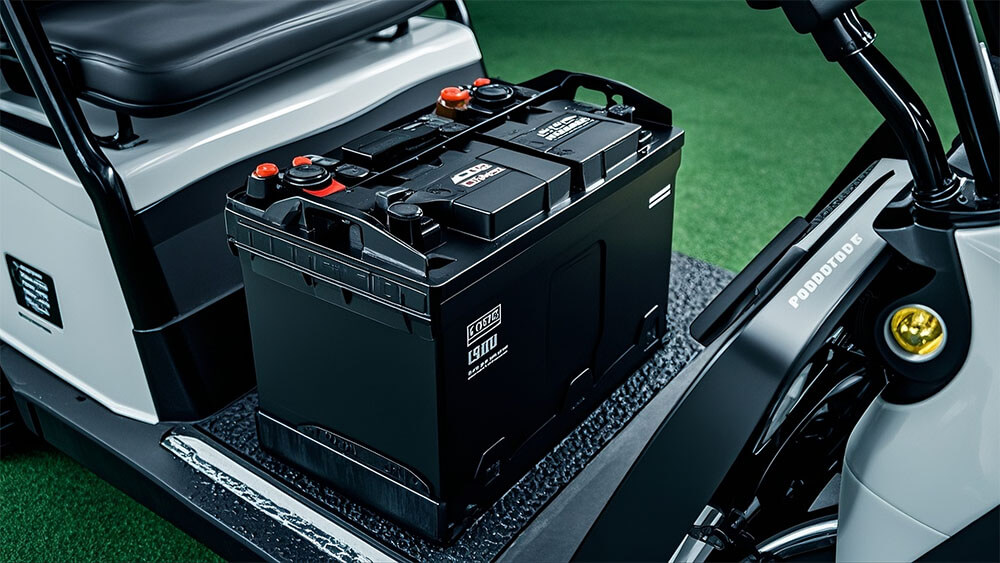
Part 3: Key Factors to Consider When Choosing the Right Battery
3.1 Voltage and Capacity: Matching Your Golf Cart’s Requirements
Matching the voltage and capacity of your battery to your golf cart’s specifications is essential for optimal performance. Voltage determines the power output, while capacity, measured in Amp Hours (Ah), indicates how long the battery can sustain that power. Selecting the right battery ensures smooth operation and prevents underperformance or damage to your cart.
To determine the correct capacity, calculate your desired runtime. For example, if your cart consumes 50 Amps per hour and you need 4 hours of use, you’ll require a battery with at least 200 Ah. Choosing a battery with a higher Ah rating provides a buffer for unexpected demands and extends its lifespan. Additionally, consider your usage patterns. Frequent use or challenging terrains may require higher capacity batteries to maintain reliability.
3.2 Battery Lifespan and Warranty: Ensuring Long-Term Value
Battery lifespan and warranty are critical factors in choosing the right battery. A longer lifespan reduces replacement costs and downtime, while a robust warranty provides peace of mind.
When evaluating warranties, prioritize coverage for manufacturing defects and performance guarantees. A comprehensive warranty reflects the manufacturer’s confidence in their product and ensures long-term value for your investment. For frequent users, investing in a battery with a longer lifespan and reliable warranty minimizes operational disruptions and enhances cost efficiency.

Part 4: Tips for Maintaining Your Golf Cart Battery
4.1 Proper Charging Practices: Extending Battery Life
Proper charging practices are essential for extending the life of your golf cart battery. Always charge the battery fully after each use to prevent deep discharges, which can cause irreversible damage. Avoid interrupting the charging cycle, as incomplete charges reduce efficiency over time. For optimal results, charge the battery in a well-ventilated area and maintain a temperature range of 60°F to 80°F. Extreme temperatures can slow chemical reactions or cause condensation on terminals, interfering with charging.
Plugging in your golf cart after every use ensures the battery remains ready for operation. Additionally, using a high-quality charger designed for your battery type prevents overcharging and uneven voltage, which can shorten its lifespan. These simple practices help maintain consistent performance and reliability.
4.2 Cleaning and Storage Tips: Keeping Your Battery in Top Shape
Regular cleaning and proper storage keep your battery in excellent condition. Clean the terminals with a baking soda and water solution to neutralize acid and remove corrosion. Ensure the terminals are dry before reconnecting to avoid electrical issues. For flooded lead-acid batteries, check water levels monthly and refill with distilled water as needed. Always top off water levels after charging to prevent damage to the battery plates.
Store the battery in a cool, dry place when not in use. Fully charge it before storage to avoid sulfation, which can reduce capacity. Monitoring voltage during storage helps identify potential issues early, ensuring the battery remains functional when needed.
4.3 Monitoring Battery Health: Identifying Issues Early
Monitoring your battery’s health allows you to address problems before they escalate. Regularly check voltage levels to ensure they remain within the recommended range. Low voltage often indicates wear or inefficiency. Assess the battery’s capacity to determine its ability to hold a charge. Tracking internal resistance can also reveal performance issues.
Using a Battery Management System (BMS) provides real-time data on performance metrics, enabling proactive maintenance. Physical inspections for damage or wear further enhance safety and reliability. These monitoring techniques ensure your golf cart battery delivers optimal performance throughout its lifespan.
Choosing the right golf cart battery ensures optimal performance, durability, and efficiency. To make the best choice, consider these key factors:
Match the battery type to your usage needs and terrain.
Evaluate voltage and capacity for compatibility with your golf cart.
Prioritize batteries with long lifespans and minimal maintenance.
Opt for eco-friendly options to support sustainability.
By focusing on these aspects, you can enjoy reliable power, reduced maintenance, and long-term value. A well-chosen battery enhances your golf cart experience while minimizing environmental impact.
FAQ
What is the difference between gas and electric golf carts in terms of battery needs?
Electric carts rely on batteries for power, while gas golf carts use fuel. Electric carts require regular battery maintenance, whereas gas carts need minimal battery upkeep for starting.
How often should you replace a golf cart battery?
Replace your golf cart battery every 4-10 years, depending on the type. Lithium-ion batteries last longer, while lead-acid batteries require more frequent replacements.
Can you upgrade your golf cart to use a lithium-ion battery?
Yes, you can upgrade most golf carts to lithium-ion batteries. Ensure compatibility with your cart’s voltage and capacity requirements before making the switch by contacting Large Power.
Leave Message
Hottest Categories
-
Hottest Industry News
-
Latest Industry News





